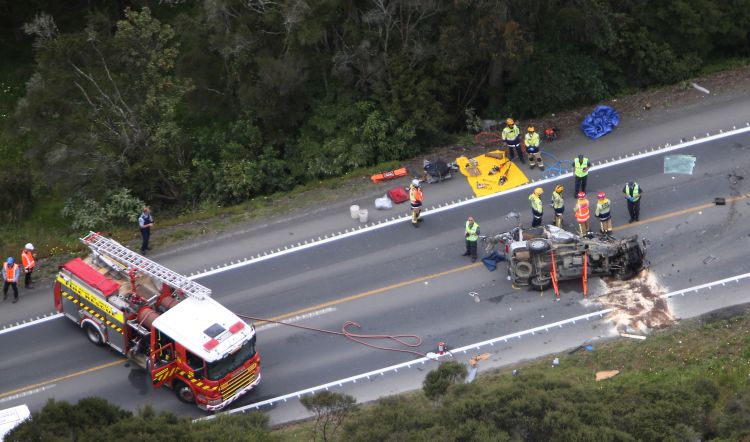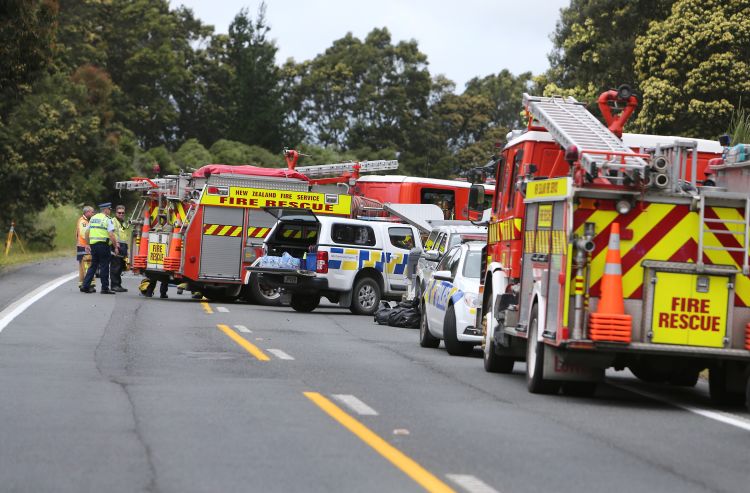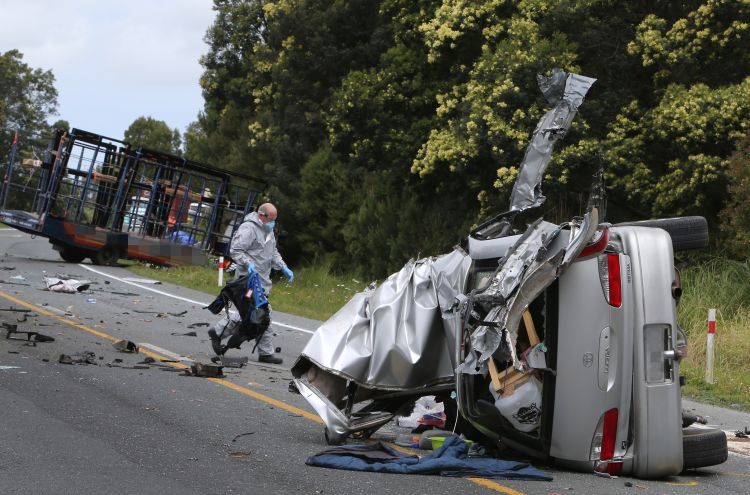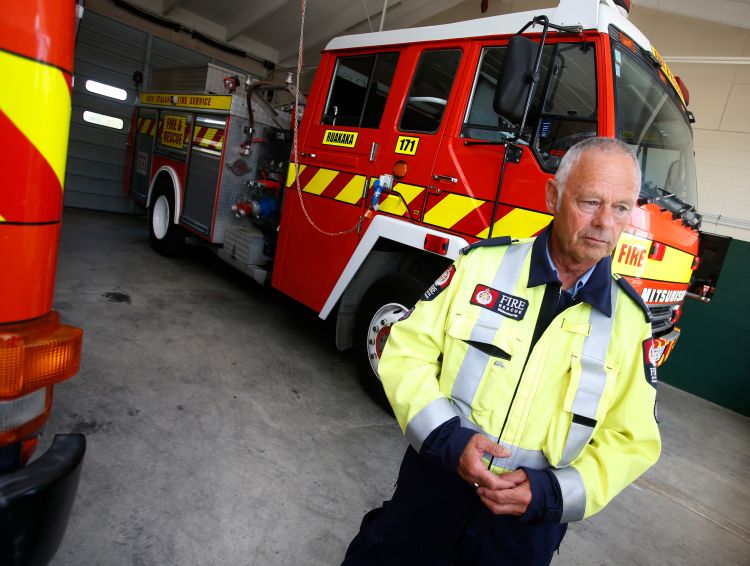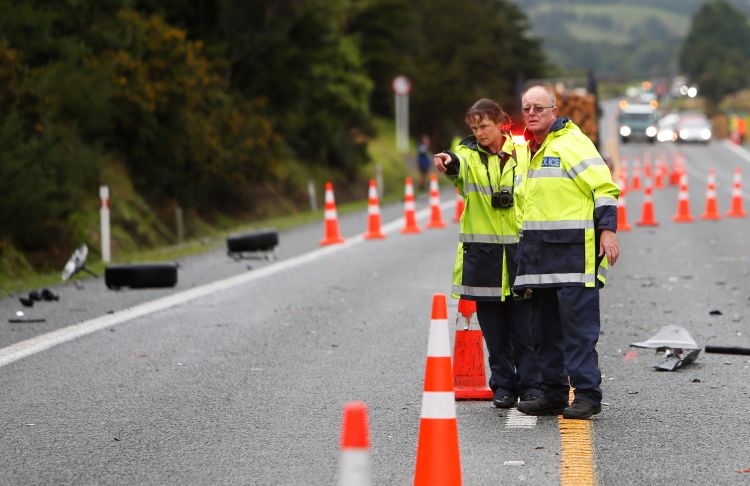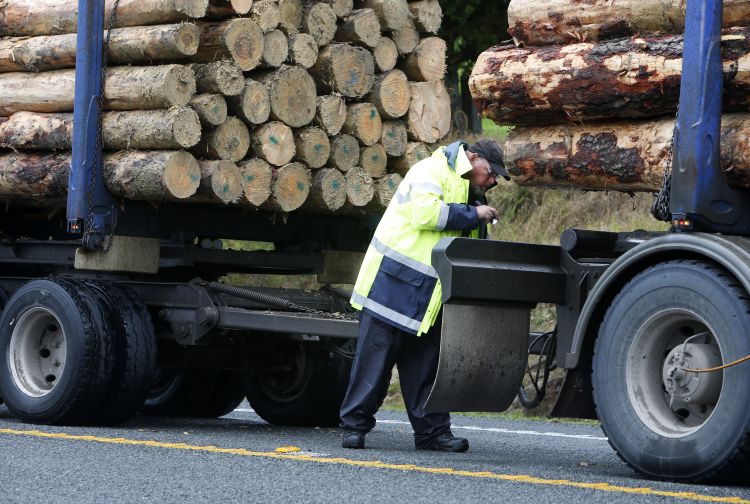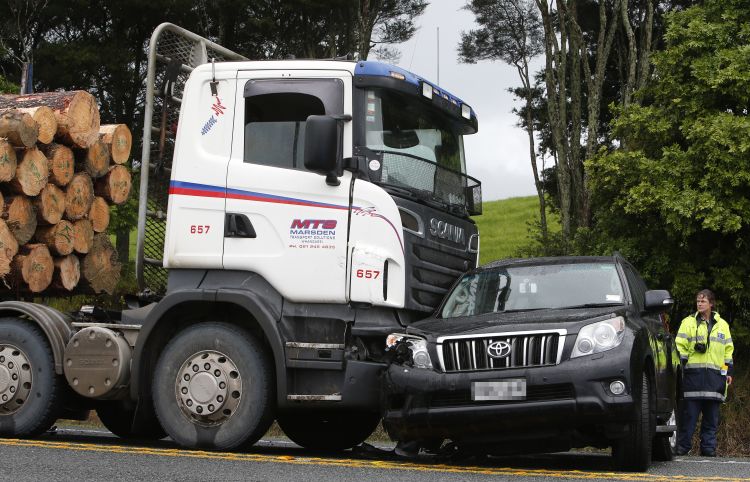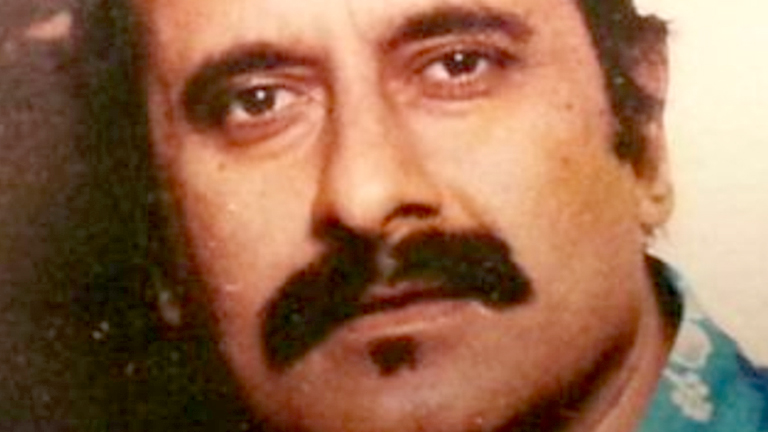The deadly highway to Northland
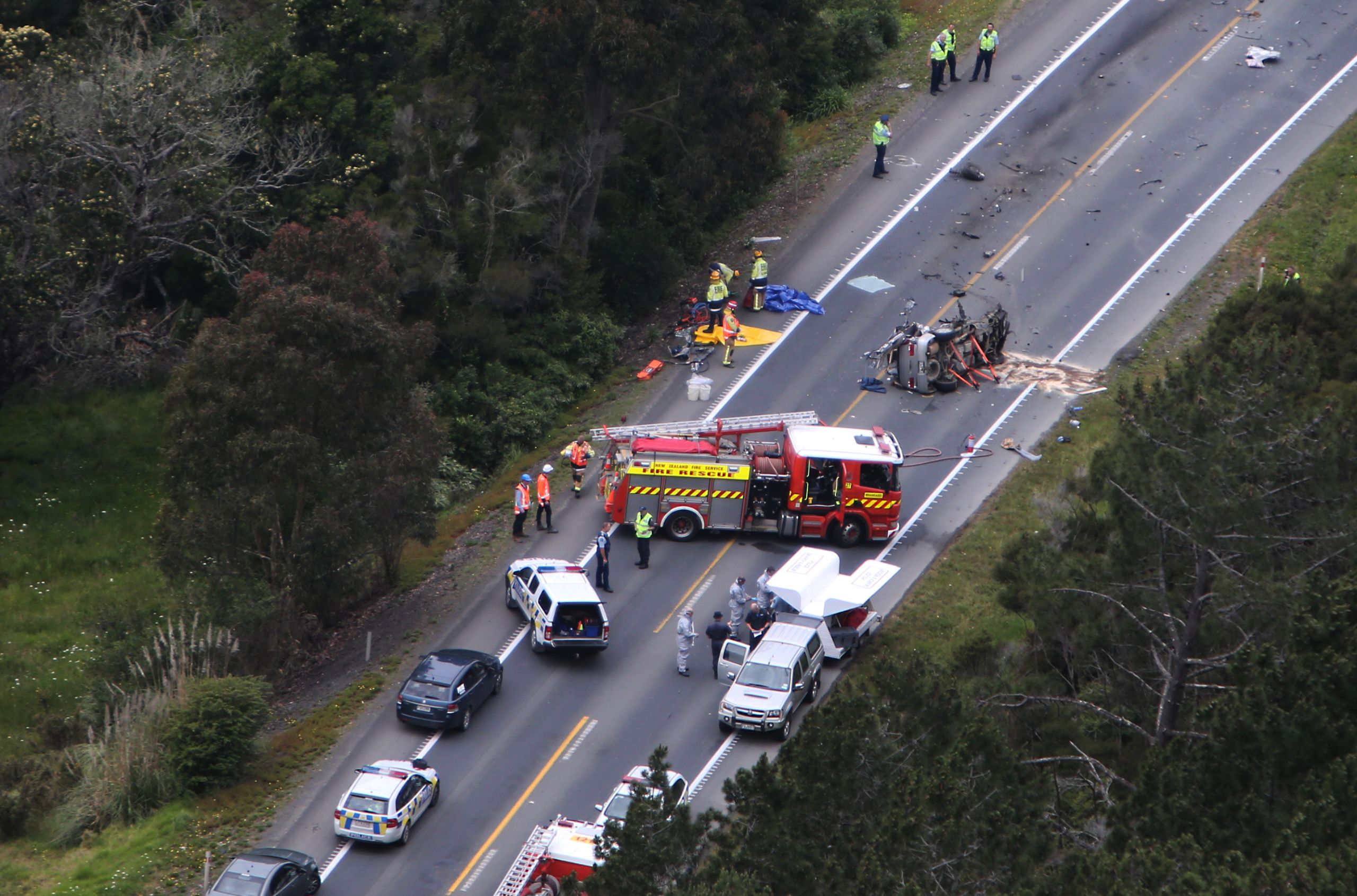
The black tar-seal sweeps around the bends on State Highway 1 south of Whangārei towards the roundabout at Port Marsden Highway.
Anyone who has travelled to and from Northland has driven the road.
In summertime and on long weekends it is heaving with traffic and people keen to leave behind the big smoke of Auckland to enjoy the surf and idyllic coastline in Northland. But not everyone makes their destination.
The Northern Advocate examines this deadly 22km-long stretch of SH1. We talk to the first responders at the coal face of those fatal crashes, speak with truck drivers and learn how vital the link is for the economy and what solutions have been proposed.
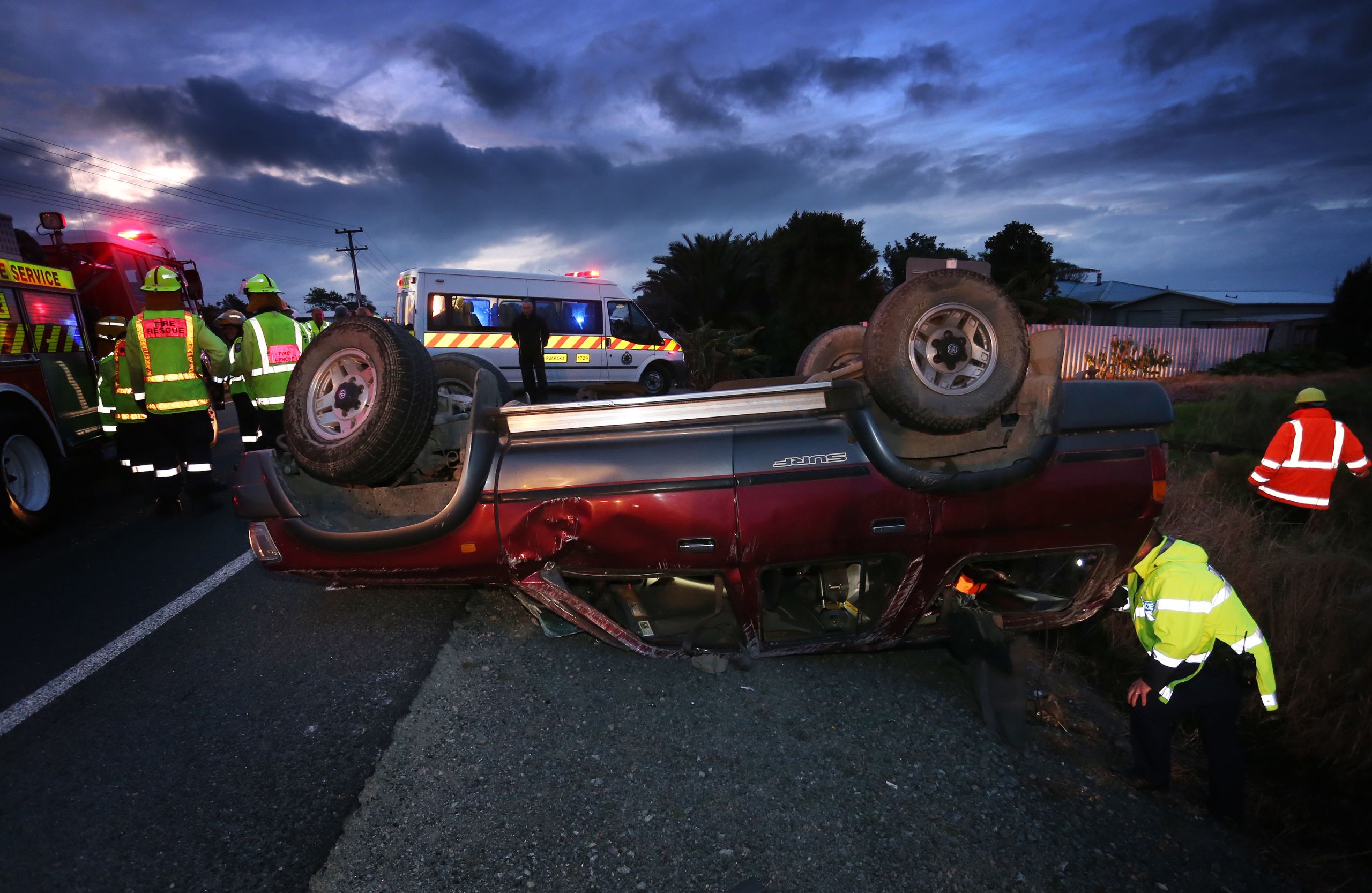
State Highway 1 is Northland’s most significant link to the rest of the country, but one section is also the region’s biggest killer.
Since 2008, 19 people have died on the road which runs from just south of Whangārei at Toetoe Rd, to the roundabout with Port Marsden Highway near Ruakākā.
More than 40 people were seriously injured during the same period, and then there were those who survived narrow misses and lucky escapes.
Northland roading officials and local body politicians are continuing to push for a four-lane highway, citing safety, access and resilience as extremely important reasons. But a change of government has seen a different focus on roading and meant the four lanes are now not an option.
Politicians agree the stretch of road must be improved but instead of a four-lane Highway, an alternate road, running parallel to the existing state highway, has been given the go ahead for the long term while safety improvements continue in the interim. Those improvements include florescent poles on the centre line, more passing lanes, pullover bays and upgraded intersections and median and side barriers.
John Bain, chairman of the Regional Transport Committee, has long pushed for changes to make the road safer to stop the carnage and to ensure Northland's economic lifeline is strengthened.
“I’ve been involved in this road for nearly eight years and in that time we have seen the number of vehicles multiply by a considerable amount. So in the summer period, three times the Northland population will head into the region, most of them using State Highway 1, including the section south of Whangārei to Marsden point intersection,” Bain said.
“This is the absolute arterial route for Northland, it is the life blood for Northland. Every tourist, every bit of freight that leaves here, goes down this road and it’s important we maintain it.”
Bain said the previous plan for the four-lane highway between Whangārei and the roundabout intesection would have taken out much of the heavy traffic. He had not given up on that plan and hoped remedial work on the existing route would lower the crash rate.
“But the reality is we have poor geology, we've got a problem building the roads and keeping them in good condition. We need to make sure when we do get this improvement that all these factors are taken in to consideration so we are proud to say it's State Highway 1, the main arterial route of New Zealand in to Northland. Resilience is important because if we have a crash and police have to close the road for a number of hours to do their thing the alternates around the country roads is just an abysmal trip over roads that have been there for hundreds of years and are not designed for the traffic we have got today.
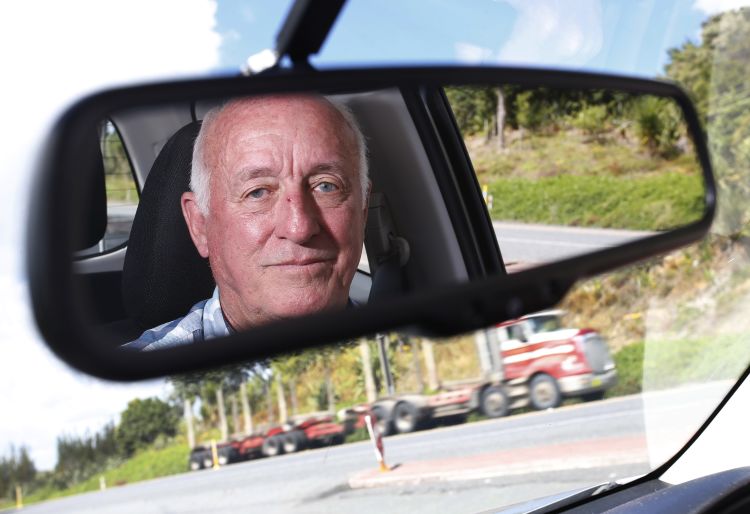
Chairman of the Regional Transport Committee John Bain describes State Highway 1 as the arterial route for Northland and “the life blood for the region”. Photo / Michael Cunningham
Chairman of the Regional Transport Committee John Bain describes State Highway 1 as the arterial route for Northland and “the life blood for the region”. Photo / Michael Cunningham
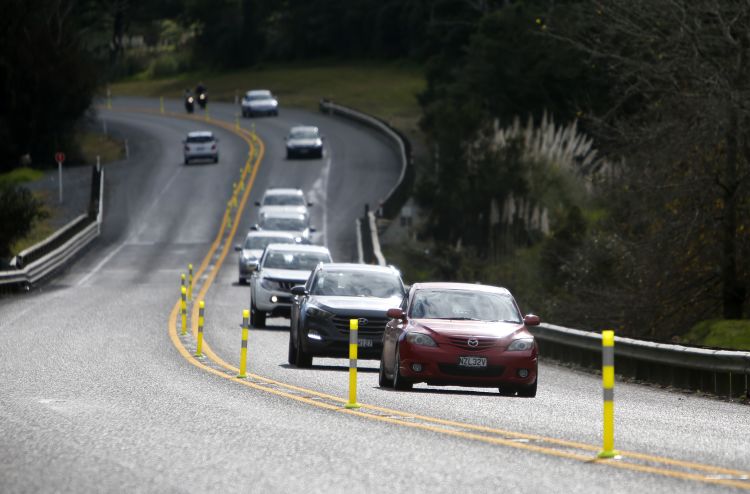
Florescent yellow poles on the centre line are part of the road safety improvements. Photo / Michael Cunningham
Florescent yellow poles on the centre line are part of the road safety improvements. Photo / Michael Cunningham
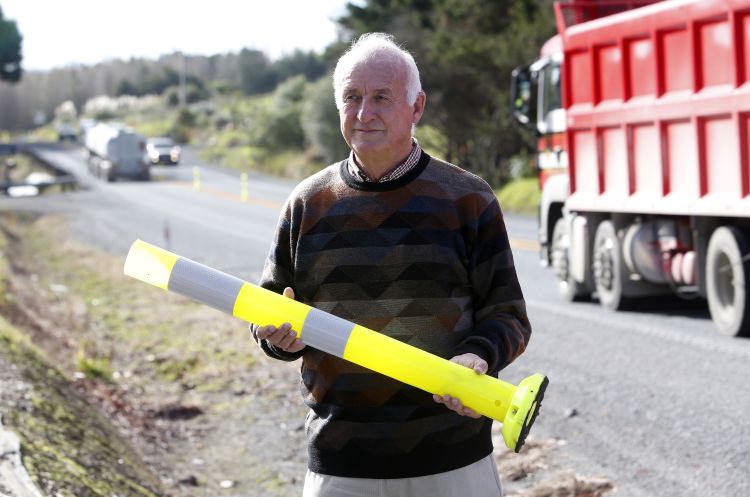
John Bain with the yellow poles. Photo / Michael Cunningham
John Bain with the yellow poles. Photo / Michael Cunningham
“There are lots of issues going back many, many years and it's successive governments that need to take the blame for some of it. We can't say it's all today, it goes back over a number of years where the improvements have not been made.”
While a second road may help, it was as good as putting a Band Aid on a gash according to Bain. “We need to make sure in the long-term planning for our roads in Northland that we have a four-lane highway similar to the one they have between Hamilton and Cambridge because that is proven to be the safest, most efficient road system that you can possibly get and that’s what we are after.
“Safety, efficiency and resilience - that’s what we are after.”
Police know only too well how dangerous the road is and in September 2018 it was identified as one of 10 hotspots around New Zealand that will come under tougher police scrutiny in an effort to reduce serious crashes.
But Northland police had already increased their presence and focus over the previous 18 months.
The NZ Transport Agency (NZTA) generated a list of 10 highways for police patrols to focus on in an effort to reduce serious crashes, with the analysis taking into consideration historical crash data, traffic volumes, speed surveys and physical road characteristics.
The stats showed the section of SH1 had more fatalities per kilometre than any of the other section of roads, with 19 deaths over the past 11 years. The figure equated to a staggering 0.74 deaths per kilometre.
Highway patrol Senior Sergeant Ian Row said police actively patrolled the dangerous section of highway with the resources available.
“In our weekly taskings, that specific piece of road has been a focus for the last 18 months. From our point of view, having regular, consistent enforcement there is a priority.”
Speed-camera vans were also being used in a bid to make the road safer and encourage better driver behaviour.
Row said the fact the Northland highway was included in the top 10 sites in the country only confirmed what local police were well aware of.
“Police are out there to be seen and enforcement has an impact on people's driving.”
NZTA numbers from the Crash Analysis System shows about 28,000 vehicles a day at the northern end of the corridor, with 5.4 per cent consisting of heavy vehicles. There are about 15,000 a day at the southern end, with about 12.2 per cent of the traffic being heavy vehicles.
The average for the whole corridor is 20,000 with 8.4 per cent heavy vehicles.
The victims
It was a typical balmy summer’s evening in Northland on Christmas day 2015.
Traffic on State Highway 1 south of Whangārei was bumper to bumper as people, having celebrated the day, were travelling to their favourite holiday spots about 6.30pm.
For one Onerahi family it meant packing up their two cars and heading for their caravan at the popular seadside destination at The Sandspit, near Warkworth. It was a family tradition but it could also have been their last together.
A French tourist driving north, with a female passenger, crossed the centre line just before the intersection with the road leading to the Puwera landfill, and slammed into the vehicle driven by Aynslie Holland and her passenger, daughter Maddie Adams. The north-bound rental car then spun out of control, striking a second vehicle in which Martin Adams and youngest daughter Emilie were travelling in.
In a split second their lives changed.
“I remember swearing and thinking, 's***, what’s he doing?', and then I just slammed on the brakes and moved to the left, hoping that he would go back onto the other side,” Aynslie says. “Then I knew we were going to get hit.”
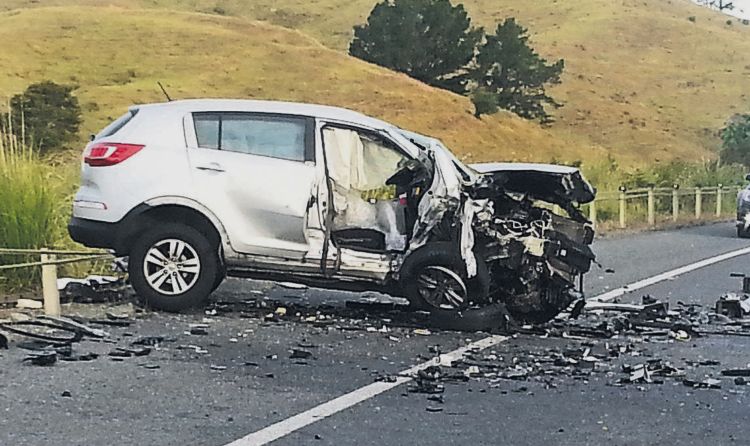
French tourist Remi Morilleau died in this road crash on Christmas Day 2015 - the day he arrived in the country.
French tourist Remi Morilleau died in this road crash on Christmas Day 2015 - the day he arrived in the country.
She wipes away tears and continues.
“Maddie called out ... I just remember saying we are going to be OK. Then it stopped, it was very quick.”
She asked if Maddie was alright then instructed her to get out and “get daddy to call an ambulance”.
Just one car back, Martin watched the horrific few seconds unfold. “I remember looking up and the car from the other side of the road, that was travelling north, just didn't go around the corner and came across the middle line.
“Aynslie swerved as much as she could but it hit them head-on on the front driver’s corner and spun them around onto the barrier on the side. Then it spun around and hit Emilie and I and pushed us across the road into the other lane on the other side of the road.”
Martin pauses while he recalls the terrifying seconds. “Yeah, it was ... totally unbelievable really. Nightmare stuff. All the airbags in that vehicle had activated so I couldn’t see in the car. I remember thinking I need to go and help but I don't know what to do. I put my head in the car and didn’t know what to expect.”
Aynslie had to be cut from the car. The force of her foot on the brake had travelled through her leg and caused her pelvis to shatter and dislocate. She also suffered a fractured back, cheek and nose.
The rest of the family were not injured.
A woman who had stopped took the two young girls and put them in her car and covered the windscreen.
“I knew he had died and I could hear her, his passenger, calling out. The people who helped us had really great insight to help our girls so they didn’t have to see terrible stuff,” Aynslie said.
She had surgery the same day, then more surgery at North Shore Hospital two days later. For eight weeks Aynslie was in a wheelchair and eventually had to learn to walk again.
She has accepted she will never be the same again and now has a “new normal”.
“It’s been tricky for lots of people ... it's impacted on lots of people but you know we get to have Christmas all together and his family doesn’t. We acknowledged his family on the first anniversary, just to say fortunately we are all together but we were thinking of them.”
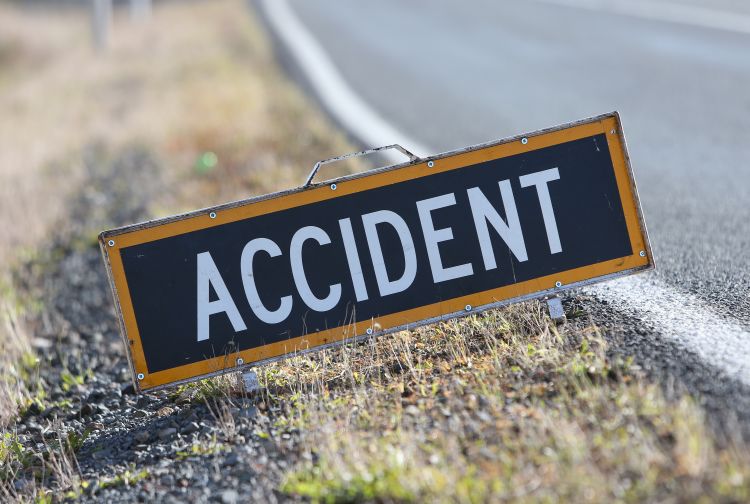
Martin reckons his family is extremely lucky and they have had plenty of support from family, friends, school and the community.
“It’s just tragic the whole circumstance, we don’t blame anyone. He has paid the ultimate price really. His girlfriend, or partner, who was in the vehicle had terrible injuries as well ... it should never have happened but it’s not a blame situation.”
The family have spoken out about their chilling brush with death in the hope people will think about their own driving behaviours and take away a road safety message from their terrifying experience.
The whole family are now acutely aware of what other drivers are doing on the road. Martin said the work done on the Bryndewyn Hills with the wire barriers in the centre of the road and along the road edges had no doubt saved lives. He believes that similar work on the section south of Whangārei is needed.
Aynslie said the yellow flexie poles now in place on the dangerous section of road had made drivers more aware and could have potentially been enough to stop the French driver from crossing the lane and smashing into her vehicle.
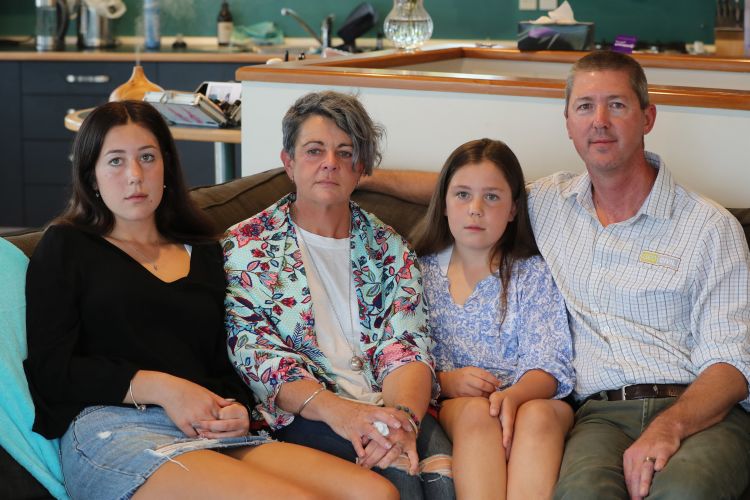
Maddie Adams, Aynslie Holland, Emilie and Martin Adams. Photo/John Stone
Maddie Adams, Aynslie Holland, Emilie and Martin Adams. Photo/John Stone
Picking up the pieces
Firefighter Jeff D’Ath has been called to hundreds of crashes over his 27 years with the Ruakākā Brigade but the tragedy and finality of fatal crashes is something he reckons he’ll never get used to.
“Probably the finality of it, that sad look of a person who actually is never going to go home, won't go back to their family, won't move again, that is so sad,” the seasoned firefighter says.
“You don’t really harden up to it. Life is life and death is death. We have all got families, we have all got lives and it's a waste to see them get taken that regularly.”
As a Ruakākā local, D’Ath drives the road twice a day to and from work in Whangārei. He knows the road and he knows the dangers.
So when the station siren sounds indicating an emergency it’s a mix of emotions. Adrenalin pumps but there is always the fear he might know the victims. “It’s a lot of excitement and adrenaline straight away because the community is calling. We don’t know what they want at that stage but we know there is something big going on. It’s a mad race to get to the station and then get to the job.”
As the truck rolls to the job, D’Ath is planning how to deal with what he will be faced with.
“I think about who is in the truck with me. We have a bunch of new firefighters. Some of those guys have never been to the sort of trauma we might expect but sadly that’s a big part of what we see.
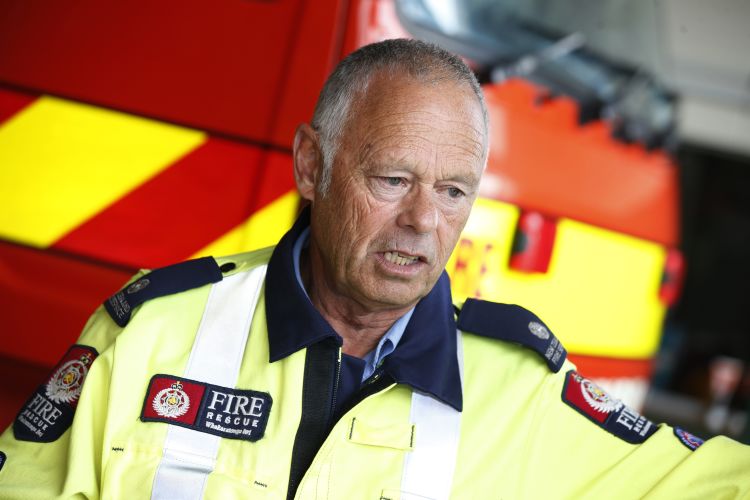
Station Officer Jeff D’Ath says even after 27 years fatal crashes are still hard to deal with. Photo / Michael Cunningham
Station Officer Jeff D’Ath says even after 27 years fatal crashes are still hard to deal with. Photo / Michael Cunningham
“I work out who is coming in to do the work, who is staying back to look after traffic and keep the scene safe without getting into the messy bit where we can actually start cutting people out of cars. Then it’s a matter getting my head around it. Our job is to make it better for those involved and those around the scene.
“I guess the first thing is the trauma. That is scary, that is the ugliest part of any job. It can be really exciting and at a job you can make a difference ... you can release them from a car and save their life.”
D'Ath says firefighters were needed to free the trapped and injured people and to reassure those injured until paramedics arrived and could offer pain and medical assistance. “More than any other call I have been to are car crashes between Ruakākā and Whangārei. It’s just one of those highways. I have seen more death on that road than I have seen in my whole life because that is the nature of State Highway 1 in that area ... the accidents keep happening.”
And often he knows the people involved.
“I do see people I know and that’s difficult to deal with. I care very much about those people and to try and sort these people out and make them comfortable and get them out of their cars. I think about who is at home and probably doesn’t even know what is happening, and that could be a wife or husband.”
But the worst is seeing children involved.
“When you think about children, they are so innocent. At the end of the day it doesn’t matter what they were doing they are just passengers in a car and if they are not belted in they suffer.”
In the policing world it’s one of the worst jobs to be assigned; the job of knocking on someone’s front door to deliver probably the most devastating news they will ever get, the news that someone they love has been killed in a car crash.
For seasoned police officer Inspector Wayne Ewers it’s the job he dreads the most, even after 34 years in the blue uniform.
“It’s a horrific job. It doesn’t get easier with age.”
It’s the look on the face of those he is delivering the life-changing news to that he vividly recalls.
“In the early hours of morning and there’s a knock on their door. It’s the look on their face, they know you are there and it’s not good. You know the pain of what they are going through and the pain they are dealing with.”
“It’s a horrific job. It doesn’t get easier with age.”
Police officer Inspector Wayne Ewers
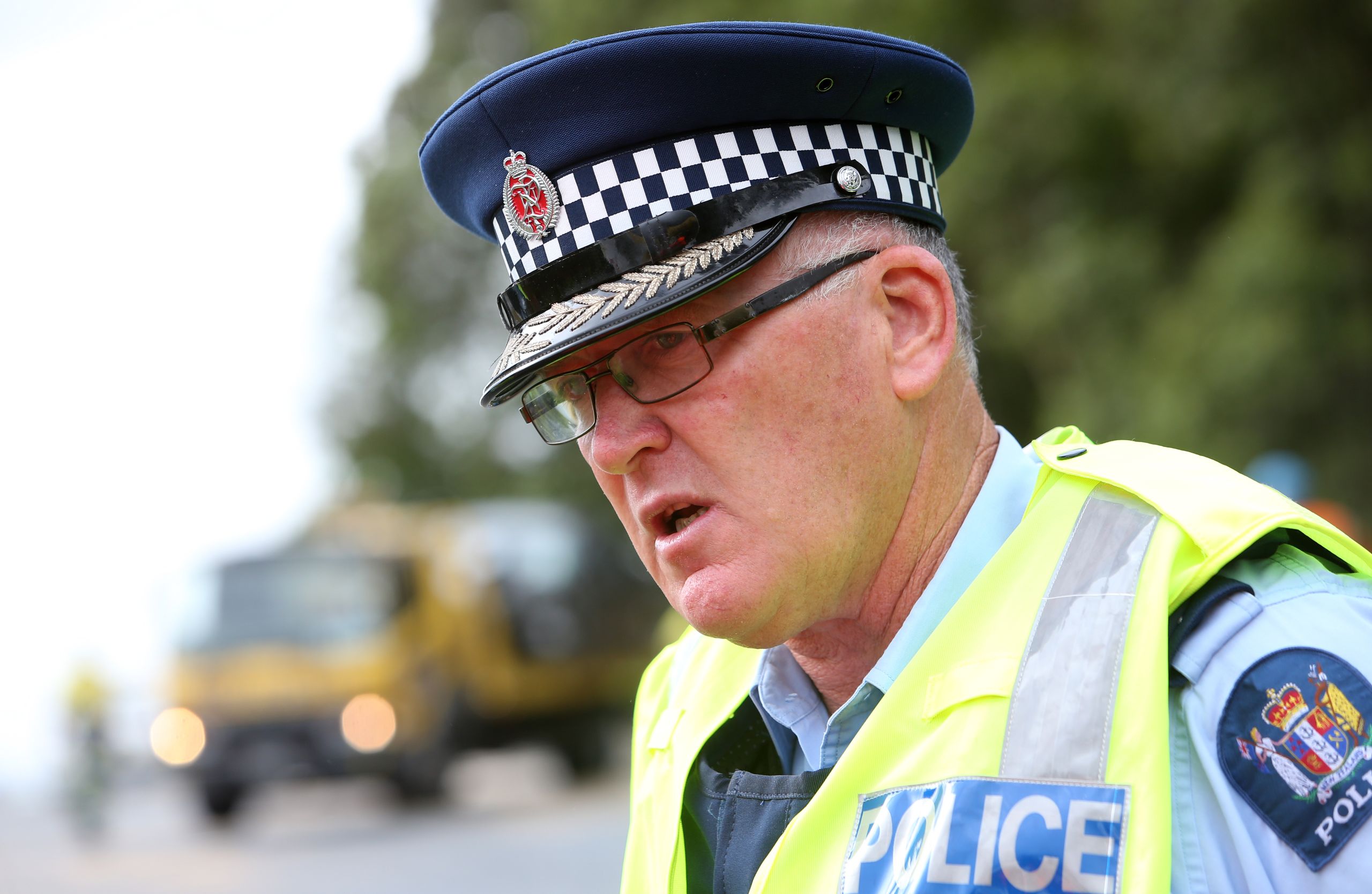
The economic impact
Bill Shepherd is under no illusion how vital the road is to the region’s economic prosperity.
Shepherd, the Northland Regional Council chairman, describes the road south of Whangārei as Northland’s “economic lifeblood, our lifeline. It’s as simple as that.”
“Ninety eight per cent of Northland’s freight goes down the highway between Whangārei and Auckland, and that’s the heavy freight, and 100 per cent of personal and tourist traffic goes on that road so it is Northland’s economic lifeline.”
Since his election to the council he has been part of a team that presented a collective view to government that a four-lane highway was the most important issue for Northland.
“It took us a while to get the previous Government on board about the importance of it so we were concerned that the new Government might feel it was a priority of their predecessors. It was important, from our perspective, to get the message through to Wellington that in fact it was Northland’s priority, not the previous National Government’s priority.”
So when the focus was off the four-lane highway and an alternative route proffered, it was a huge disappointment.
“Northland’s economy is place-based. It’s based on agriculture, forestry, fishing, tourism and horticulture. All of those things happen, spread across the region. If we are going to get our export products out of Northland, 98 per cent is going down that highway.”
Shepherd is not unhappy about the alternative option of a road running parallel with the existing road.
“Eventually commonsense will end up with those two roads effectively being a four-lane highway. Resilience has been part of the reason we have been trying to get that four-lane highway.”
Shepherd says since NZTA came out with an alternative route, a number of different sectors had come out completely of their own volition, expressing their support for progressing a four-lane highway.
“It's not just local government saying this is what it should be, it's people in the community actually operating businesses and spending their money in the local economy saying the same thing. We won't be giving up on the four lanes, it’s just so important.”
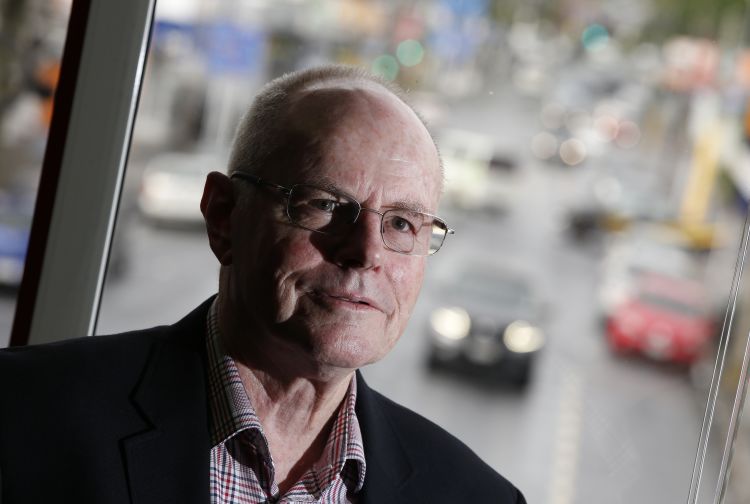
NRC chairman Bill Shepherd is under no illusion about how vital the road is to the region's economic prosperity. Photo / Michael Cunningham
NRC chairman Bill Shepherd is under no illusion about how vital the road is to the region's economic prosperity. Photo / Michael Cunningham
Fatal crashes not only impact economically on Northland, but there is also the social cost.
The latest report of the social cost of road crashes and injuries by the Ministry of Transport shows the cost of a fatal crash in Northland on the open road was more than $5 million. A serious crash was estimated to be over $1m, while minor crashes cost $113,000.
Road crashes impose financial and economic costs to society as well as costs that can’t be measured. Those include reduced quality of life, reduced productivity, medical expenses and other resource costs.
When State Highway 1 is blocked and the wheels on Ian Newey’s fleet of 11 logging trucks stop turning it has a massive negative economic impact on his business. Newey, director of IK&SM Newey Transport Ltd based out of Ruakākā, is also chair of the National Road Carriers for the Whangārei District.
His trucks haul logs from all across the Northland region from Kaitaia to Poutu.
But no matter where the trucks begin their journey, nearly all them end up on the section of SH1 south of Whangārei on their way to Marsden Point at Northport.
“The importance of that section of road to the business is crucial. It’s a corridor and it’s the backbone of our industry, the logging industry. All the west coast roads down through the Otaika Valley, through Whangārei, it all feeds into this section of highway and funnels through to the roundabout through 15A to Marsden Point.
“It’s huge and very important to us.”
When there are crashes and lives are lost and the highway is closed as emergency services work to clear the tragedy, the effect flows through to those in the freight industry.
“When the road is blocked, it stops. Our business stops. It’s that simple. It doesn’t matter what side of the accident you may be on, if the road’s closed we stop. It’s a negative. For us trucking operators, we have daily fixed costs so, if those costs are $800, if we are stopped, not turning a wheel, it stops and it’s a negative.”
NZTA numbers from the Crash Analysis System show about 28,000 vehicles a day use the northern end of the corridor, with 5.4 per cent consisting of heavy vehicles. There are about 15,000 a day at the southern end, with about 12.2 per cent of the traffic being heavy vehicles. The average for the whole corridor is 20,000, with 8.4 per cent heavy vehicles.
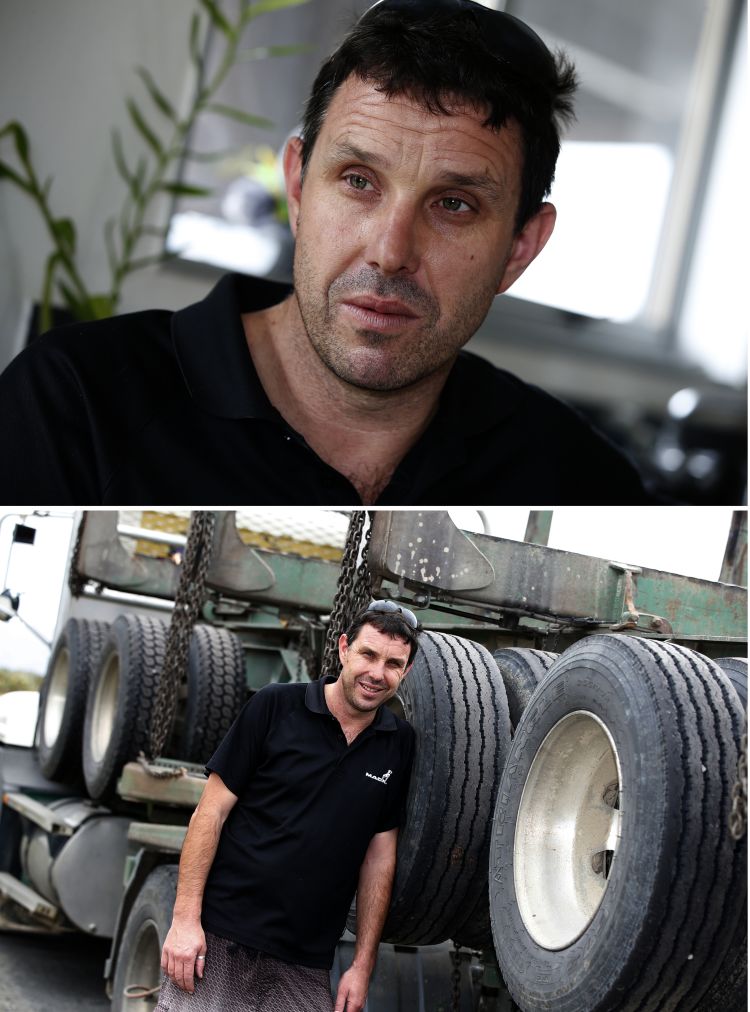
Ian Newey says the stretch on State Highway 1 from Whangārei to Ruakākā is the backbone for the logging industry in Northland. Newey believes officials should continue on a path of building roading infrastructure in the region. Photo / Michael Cunningham
Ian Newey says the stretch on State Highway 1 from Whangārei to Ruakākā is the backbone for the logging industry in Northland. Newey believes officials should continue on a path of building roading infrastructure in the region. Photo / Michael Cunningham
Newey says the trend for freight is going to increase in the future. “There's no secret that freight across the country and Northland is going to increase significantly over the next two decades. You only have to come down to Marsden Point and start looking at the growth that’s starting to happen. Have a look at our port, it's not only logs, there's actual freight coming into there and coming off as the economy in Northland keeps growing we are going to see more and more freight going over our port.
“Is the roading network good enough? I would say it’s not. It’s not going to be and it’s only holding together at the moment.”
The number of people travelling to the region was only going to rise, he said.
“Everyone loves Northland. They all come up here over the Christmas period for their holiday baches. Northland is becoming more and more of not only a destination but a choice by people to live and the economy is booming.”
Newey believes a long-term vision to future-proof the roading system is needed.
“Any improvement to what we have got is fantastic. But I think if you don’t believe the way Northland is tracking with it’s economy and the popularity ... if you don't believe that’s going to increase the traffic then you’ve got rocks in your head.
“We have to, in my view, continue on a path where we are building infrastructure. Without infrastructure, doesn’t matter what it is, it doesn’t matter what sort of business you run, doesn’t matter what you are trying to achieve, with out infrastructure you’ve got nothing.”
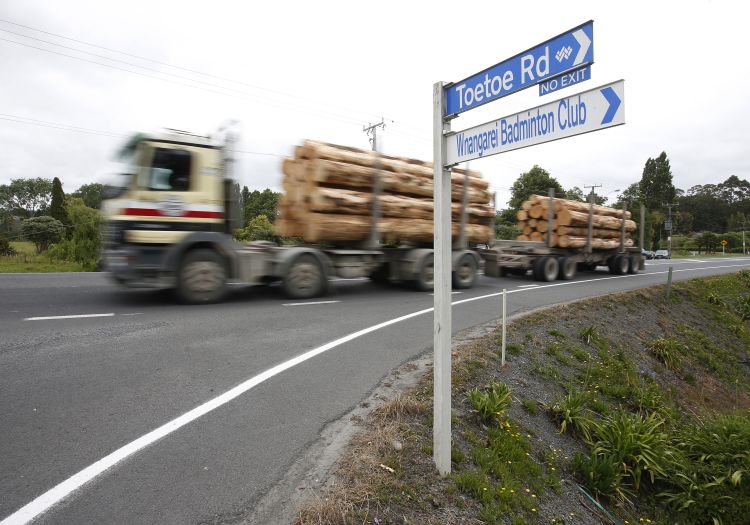
The section of State Highway 1 between Toetoe Rd, south of Whangārei to the roundabout at Port Marsden Highway. Photo / Michael Cunningham
The section of State Highway 1 between Toetoe Rd, south of Whangārei to the roundabout at Port Marsden Highway. Photo / Michael Cunningham
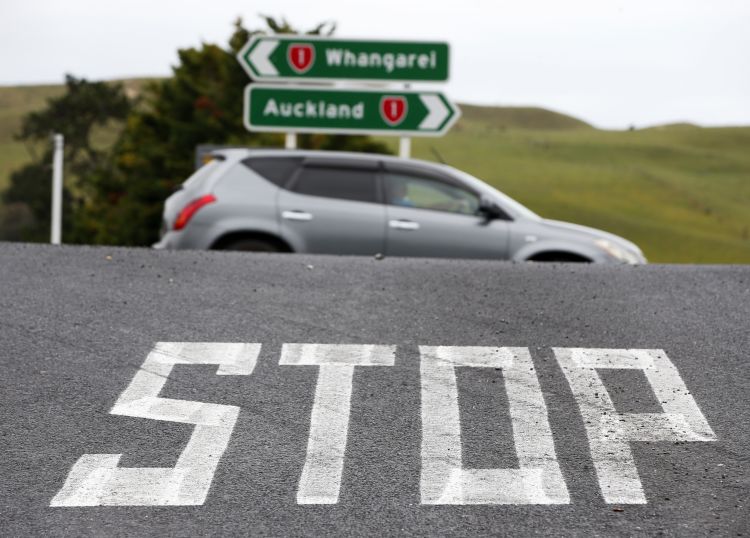
SH1 intersection with Mangapai Rd which has seen remedial work done and new traffic signals erected to slow traffic to 60km/h. Photo / Michael Cunningham
SH1 intersection with Mangapai Rd which has seen remedial work done and new traffic signals erected to slow traffic to 60km/h. Photo / Michael Cunningham
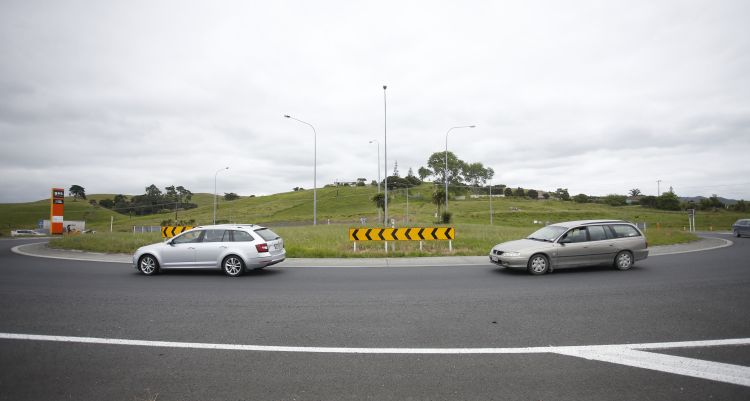
The roundabout on SH1 at the intersection with Port Marsden Highway. Photo / Michael Cunningham
The roundabout on SH1 at the intersection with Port Marsden Highway. Photo / Michael Cunningham
Solutions - where to now?
A four-lane highway is the preferred option for most people living in Northland to improve the road between Whangārei and Port Marsden Highway. But it seems those holding the purse strings have other ideas about the best way forward.
In April last year Transport Minister Phil Twyford said there was no question that State Highway 1 in Northland was dangerous in parts and it would be improved.
"It is an economic lifeline for the North and the road is dangerous in parts and needs a lot of work done on it. There's no question about that. We talked about the road in detail. Work will continue on State Highway 1. It must be improved and it will," Twyford said.The delegation of Northland mayors and officials were disappointed after being told by Twyford at a meeting at his office in Wellington that he could not promise to improve the highway to four lanes with a median barrier.Bill Shepherd, chairman of Northland Regional Council, along with Whangarei District Council Mayor Sheryl Mai, Far North District Council Mayor John Carter, Kaipara Mayor Jason Smith, Regional Transport Committee chairman John Bain, and WDC CEO Rob Furlong in his role as chairman of the Northland Transportation Alliance met with the Minister in a bid to push the four lane highway project ahead.
Shepherd said they wanted to express concern over the direction the Government was taking on their roading strategy and heading away from four-lane highways.
"He was clear he could not promise us a four-lane highway under the government priorities."Twyford said it was not his place as Minister to decide on particular roading projects."Operational decisions about the priority and timing of projects are made at arm's length of the Government by the New Zealand Transport Agency board.
"There will be safety improvements made to State Highway 1 including more passing lanes, pull-over bays, upgraded intersections, median and side barriers, and maybe even four lanes in some places. NZTA will make the best decisions on this work," he said.
In October 2018 the New Zealand Transport Agency announced a plan to improve safety and resilience in the short and medium term as well as planning for future population growth.
That plan is to build a new road that runs parallel, but to the east, of the existing State Highway 1. Where exactly the new road, running from south of Whangārei at Loop Rd to the roundabout at Port Marsden highway SH15, would go is still not exactly clear. And NZTA have not revealed a cost either, or when the project might begin.
NZTA's general manager of system design and delivery Brett Gliddon says the two separate routes across the corridor would improve resilience and provide greater choice.
In the short term the agency promised to deliver safety improvements and more reliable access on the existing state highway while continuing to plan and protect land for a new route in the long term.
“This programme will make it easier for people to access the port and Auckland and will also give people more access to a range of choices including public transport, walking and cycling. It provides two separate routes across the wider corridor which will improve resilience and provide greater choice.”
The Northland project was one of 12 that were re-evaluated to ensure the project aligned with new priorities set out in the Government Policy Statement (GPS) on Land Transport which highlighted safety, resilience and access.
The new road would carry northbound and southbound traffic and would be built to the latest design standards. While it was still being confirmed where it would go, safety work would continue on the existing highway.
"To begin with we will deliver short-term safety improvements between Whangārei and Port Marsden Highway to make it safer, such as roadside barriers, median barriers, centre-line widening and improved road marking," Gliddon says.
"At the same time we will continue to future proof for a new route between Whangārei and SH15. Along with the existing road, this will create four lanes of capacity. Land will be designated for a future transport corridor to be built on a better alignment and to the best safety standards."
He says the construction timing and the form of the new route would depend on growth and funding priorities across the rest of the country.
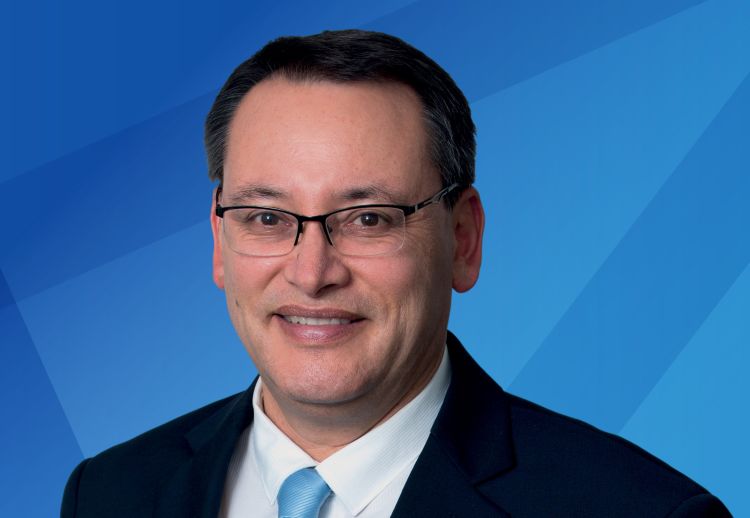
Shane Reti
Shane Reti
Whangārei MP Shane Reti has voiced his opinion, saying the alternative two-lane road fell short of the four-lane highway that Northlanders wanted and needed to be safe and prosper.
“I drive this road usually twice weekly on the way to parliament and it is clear why it is the deadliest police hotspot road, with more fatalities per kilometre than any other highway in New Zealand. Bring back the four lanes,” Reti says.
He says four-laning over this section of road would make it safer and more efficient.
“This stretch of State Highway 1 from Toetoe Road to the Port Marsden roundabout is very important to Northland’s economic future because it is also the pathway to the port for southbound freight, and the gateway to Whangārei for northbound traffic.
“Southbound traffic includes up to 500 truck movements per day to the port. The proposed four lanes from Toetoe to Marsden Point roundabout has one of the highest benefit-to-cost ratios of any section of the proposed four lanes all the way to Puhoi. The new and much vaunted Waterview tunnel has a benefit-to-cost ratio of 2, but from Toetoe to Marsden is almost double that.”
Reti says every Northland mayor and every general electorate MP would agree the single biggest economic driver for Northland was four lanes to Auckland.
“I support an integrated transport solution that includes air, land and sea transport. To future proof this vital route, a proposed pathway for a four-lane highway should be widely consulted on, and then designated so communities, land owners, transport operators and planners can have certainty for the future.
“Significant planning and community meetings were held around the proposed four lanes into Northland, with a view to construction starting in 2019. This was cancelled by the Labour-led Government so that Auckland can get a tram from Queen Street to the airport. Northland’s critical roads have been traded for Auckland’s convenience.”
Whangārei Mayor Sheryl Mai's view on the proposed solution was simple.
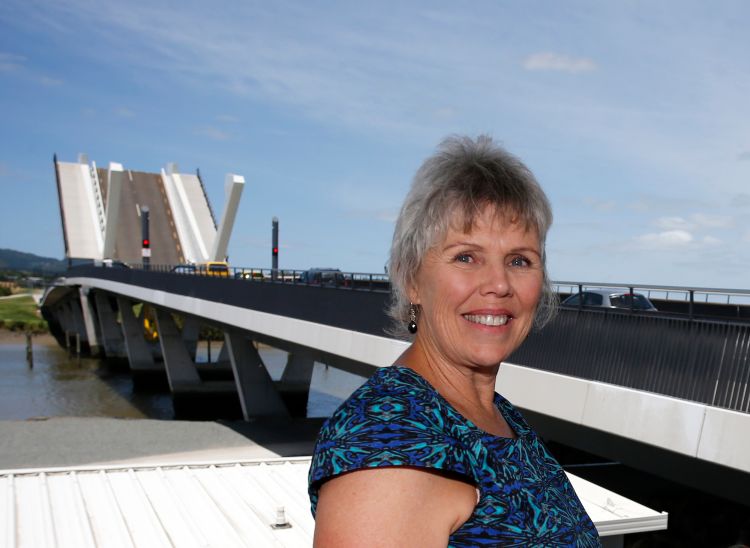
Sheryl Mai
Sheryl Mai
“If this results in a divided highway with two lanes north and south, then I support it.”
However, she is quick to say a four-lane, divided highway would be the best result, both for safety and efficiency.
Mai says the state highway was critical infrastructure for the economy, for moving freight, residents, travellers and connecting communities.
“We deserve a safe, reliable, resilient network of road transport for our region to continue to thrive and contribute to our nation’s economy.”
